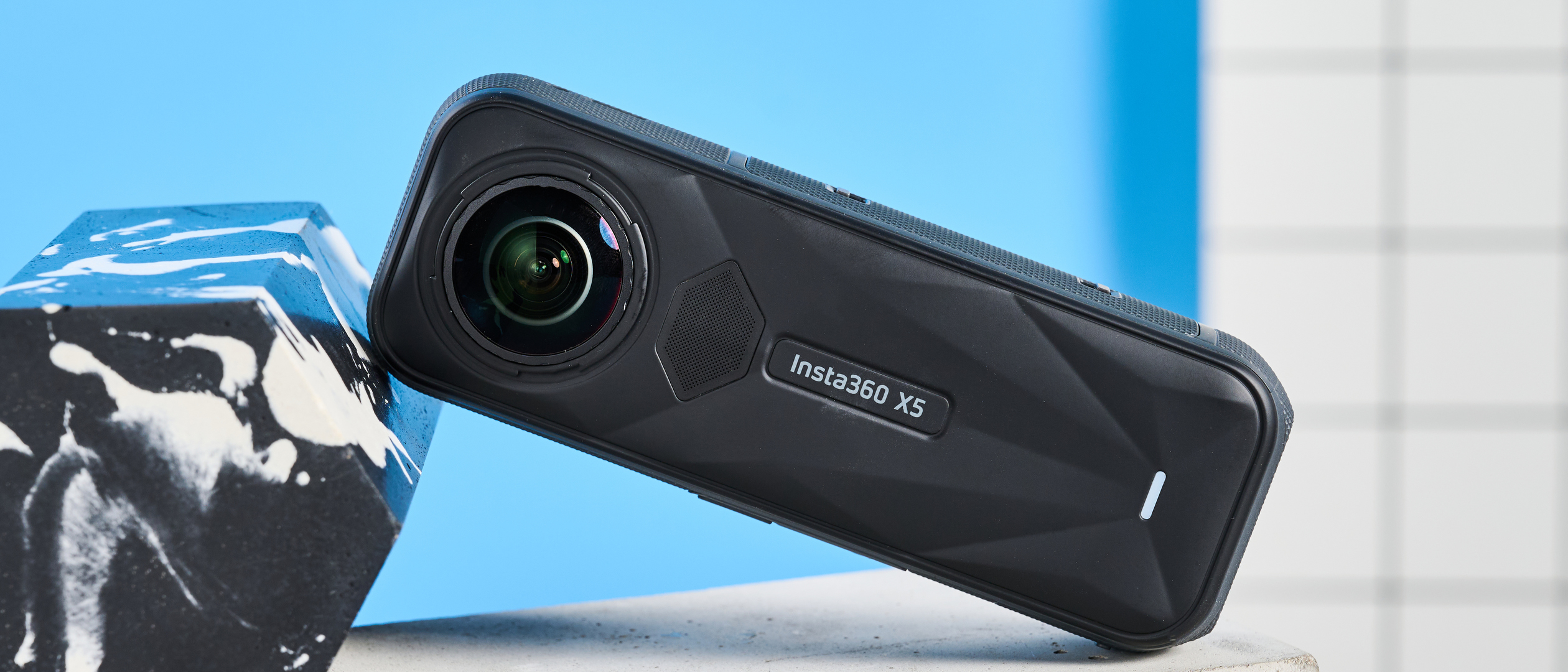Tom's Guide Verdict
The Insta360 X5 is a sizeable improvement over its predecessor, the Insta360 X4, which was already the finest 360 camera on the market. 8K/30p 360 recording allows for 2.7K reframed footage — still the best res you can get in 360 degrees. Thanks to larger sensors, low light performance is much better than ever before, while a new microphone wind guard allows clean audio free from wind buffeting. 360 -degree battery life has been boosted over the previous model, and Insta360 has introduced a replaceable lens system to remove the need for lens guards. The best just got even better.
Pros
- +
8K/30p 360 or 4K/60p single-lens video
- +
Decent low light performance
- +
Replaceable lenses
- +
Excellent mic & wind-reduction
- +
Improved 360 battery life versus X4
- +
Fantastic (free) smartphone app
Cons
- -
$50 more than the X4
- -
Decreased single-lens battery life versus X4
Why you can trust Tom's Guide
The Insta360 X5 is the latest and supposedly greatest flagship 360-degree camera from Chinese action camera manufacturer Insta360. And it's a camera the brand didn't need to make.
See, the X5's predecessor, the Insta360 X4, was already better than every other 360 camera out there. And it wasn't even a close contest. Just like the new model, the X4 offered 8K 360-degree capture. Its closest competitor, the GoPro Max, could only shoot at 5.6K.
That means Insta360 already had the rest of the 360-cam market well and truly beat, and in the most important fight no less. The X4 was a sublime instrument that I awarded 5 stars and top spot on our best 360 cameras roundup. Well, the new model is even better.
So, what are the differences, and is the X5 worth buying over its vaunted predecessor? Find out in my full Insta360 X5 review.
Insta360 X5 review: Price & availability
The Insta360 X5 starts at $549 / £519 for the camera-only bundle. That's $50 more than the Insta360 X4's launch price ($499) and objectively a lot of money. However, 360 cameras are simply expensive, and I feel the X5 offers enough features over its predecessor to warrant the extra cost.
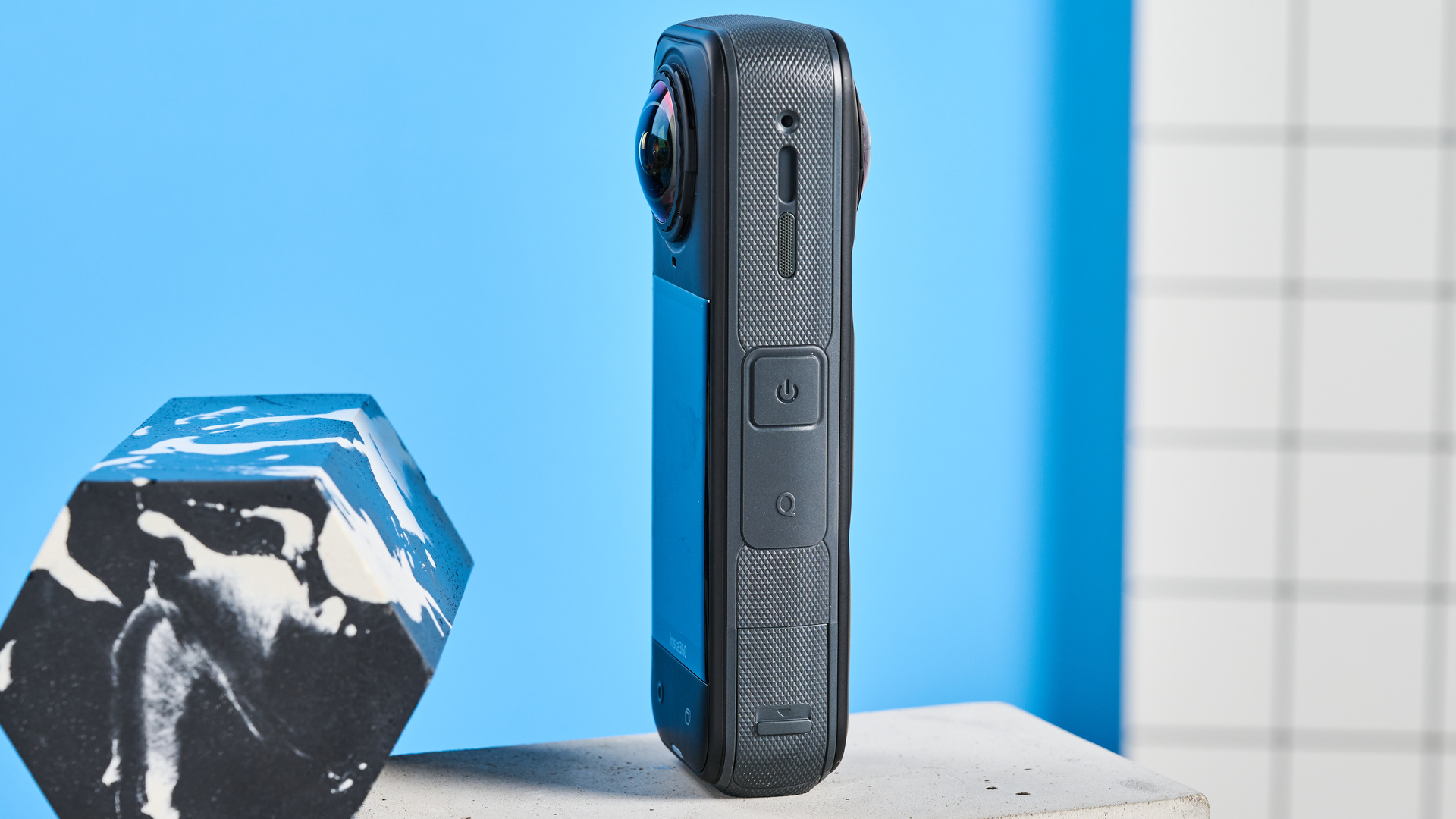
You can pick up a GoPro Max for around $349 or an Insta360 X3 for $299, if you need to save money. However, their 5.6K / 5.7K respective max resolutions give you much less wiggle room with the output resolution of reframed footage — long story short, the GoPro Max and X3 are behind the times and, I'd argue at least, a false economy.
April 2025: Pete Wolinski, Senior Editor — Hey guys! I've asked Insta360 about whether the 2025 U.S. tariffs will affect the X5's price. The answer was that the brand is keeping an eye on the situation and is determined to ensure fair pricing for U.S. customers. In essence: probably, but TBC.
Insta360 X5 review: Design & controls

The Insta360 X5 looks virtually identical to the X4, and by extension the older Insta360 X3. At 4.9 x 1.8 x 1.5 inches, it's marginally bigger than the X4, although at 7.05 ounces, it's also marginally lighter too.
Regardless, it's a big old thing, and not ideal for mounting on helmets or in tight spaces. Trust me: mounting something this large on a bike helmet causes some serious drag above 50mph.
Naturally, the X5 is extremely sturdy and is fully waterproof, now down to 49 feet (15M) versus the 33 feet (10m) of the X4. As you can always expect from an Insta360 product, it's extremely well made and feels premium (as it should, given the price).
The rear display is unchanged from the prior model, but that's no bad thing. It's large, vivid and bright enough that I had no issues using it on blazing sunny days.

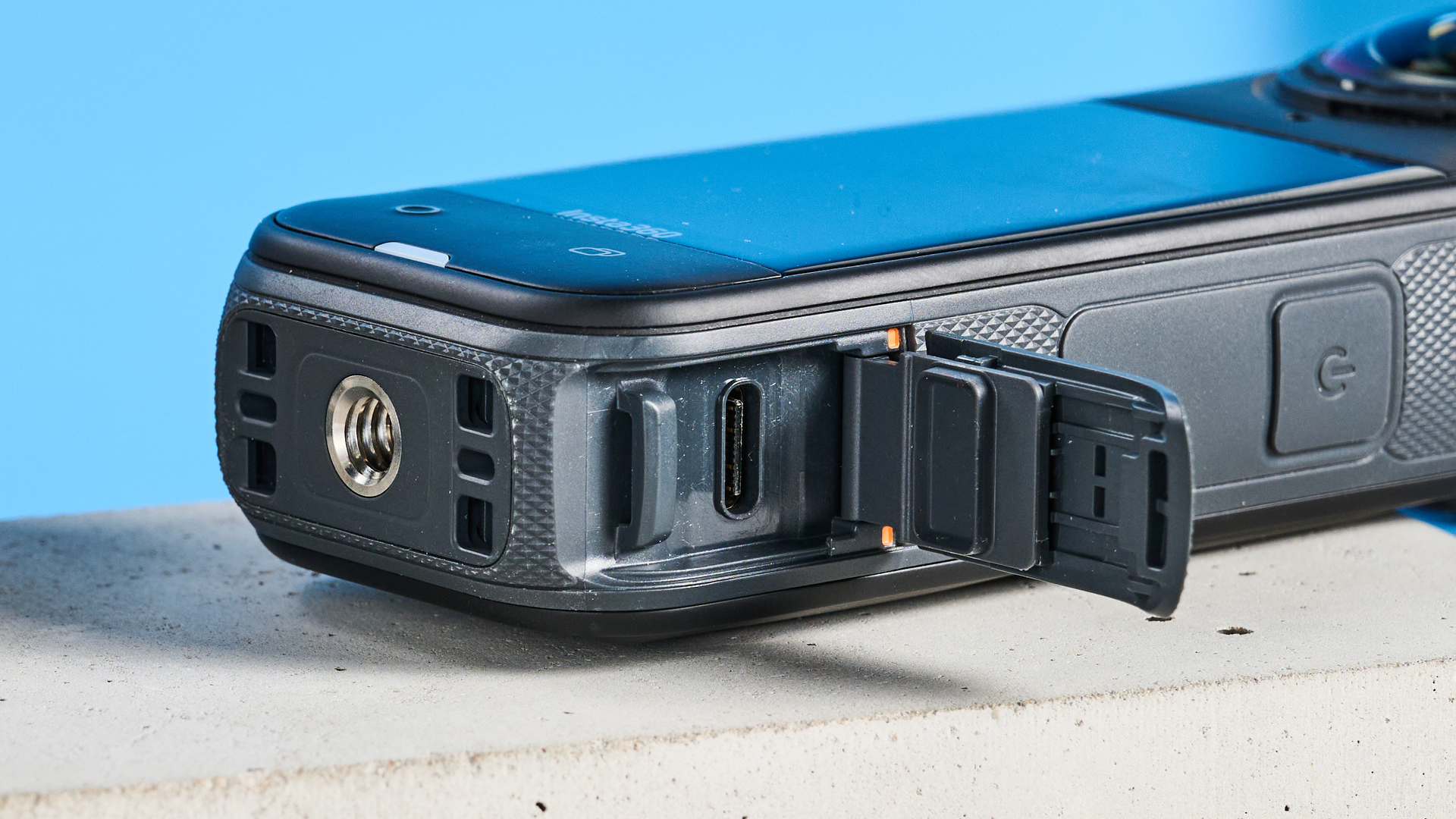
The X5 features a microSD slot within the battery compartment, and a USB-C port for charging and hooking up accessories. You won't be able to use certain accessories from the X4 if, like me, you already own that camera. The USB-C microphone adapter and batteries, for example, are not inter-compatible.
Controls & menu

The controls are laid out as per the two prior models, with the Q and power buttons along the side, while the recording and menu buttons sit on the rear below the screen. They're all easy to get to, even with motorcycle gloves on.
The menu system has been tweaked, though, and is now more complex. One of the things I have always loved about the X4 (and other Insta360 products) is the simplicity of the menu system, which has historically been easy to use one-handed, gloved, and distracted. It isn't awful now, but it took me a little time to readjust.
New features
Two important new features on this iteration are an integrated mesh wind guard over the microphone to help reduce wind buffeting, and fully replaceable lenses. I'll discuss the wind guard a little later on in the microphone section, but suffice to say it works exceptionally well.
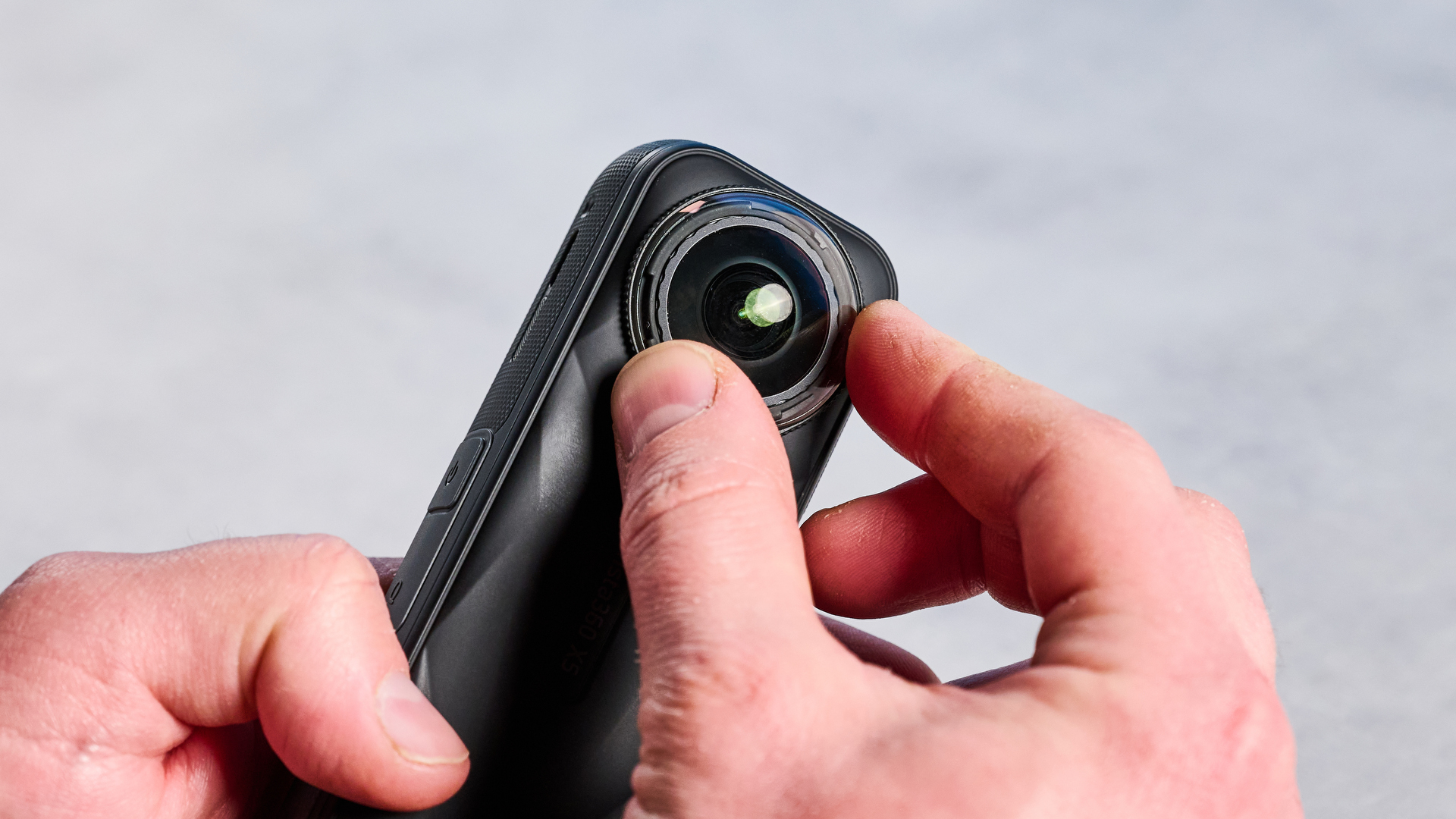
The removable lenses are also a very big deal. Insta360 has until now supplied separate lens guards to protect the lenses of the X3 and X4, given the camera's built-in lenses are extremely liable to impact from stones kicked up on the road, or impacts while positioned 6 foot in the air on a selfie stick.
Unfortunately, putting anything in front of a lens degrades image sharpness — even the tempered glass guards Insta360 produces. The manufacturer knows this, and has designed the lenses of the X5 to be removable and replaceable with the purchase of an affordable repair kit ($29), if the need arises.
This is great to see, meaning you can use your X5 without lens guards knowing there's a solution should the worst happen.
Insta360 X5 review: Video performance
The Insta360 X5 shoots phenomenally good video, primarily thanks to its 8K maximum resolution in 360-degree mode. Now, I'm not usually a fan of resolution-touting, spec-swinging contests, but in the world of 360 cams, higher resolutions result in tangible benefits.
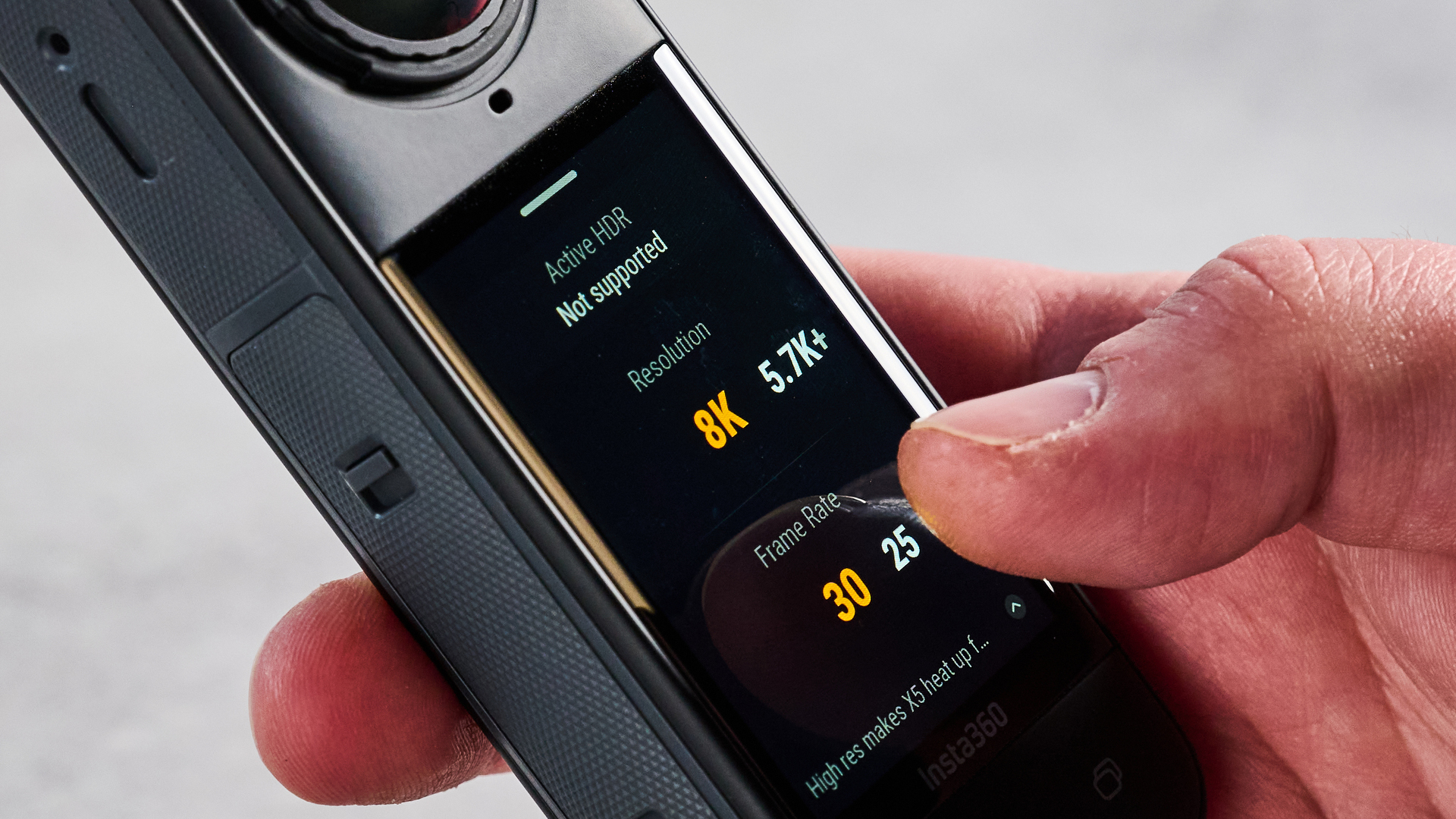
Buy an 8K traditional action camera like the Insta360 Ace Pro 2, and you won't really see the benefits of 8K over 4K, because in all likelihood you (and everyone else) will be playing it back on, at most, a 4K monitor.
However, with 360-cams, that max resolution really matters. You can't really show the full 360-degree capture in, say, a 16:9 window — i.e. on YouTube. That footage needs to be reframed to do so, which means cropping into the image.
The wider the field of view FoV you use for that reframing, the more resolution you keep, but the more of ultra-wide angle barrel distortion (fish eye effect) you'll get. The higher the max resolution, the more flexibility you have with cropping, allowing you to maintain resolution at different FoVs when reframed. The Insta360 X5's 8K max resolution typically allows:
- 4K in the widest MegaView 170° FoV
- 2.5K/1440P in the narrowest Linear 110° FoV
There are various FoVs available between the MegaView and Linear, giving you the flexibility to tailor the quality of your output based on the resolution and/or FoV you need.
In contrast, a lower max resolution, like the Insta360 X3's 5.7K, would typically result in:
- 2.7K in the widest MegaView 170° FoV
- 1080P in the narrowest Linear 110° FoV
Essentially, that 8K max resolution genuinely makes a big different to quality of your output, and the flexibility you have when editing it.
Stabilization
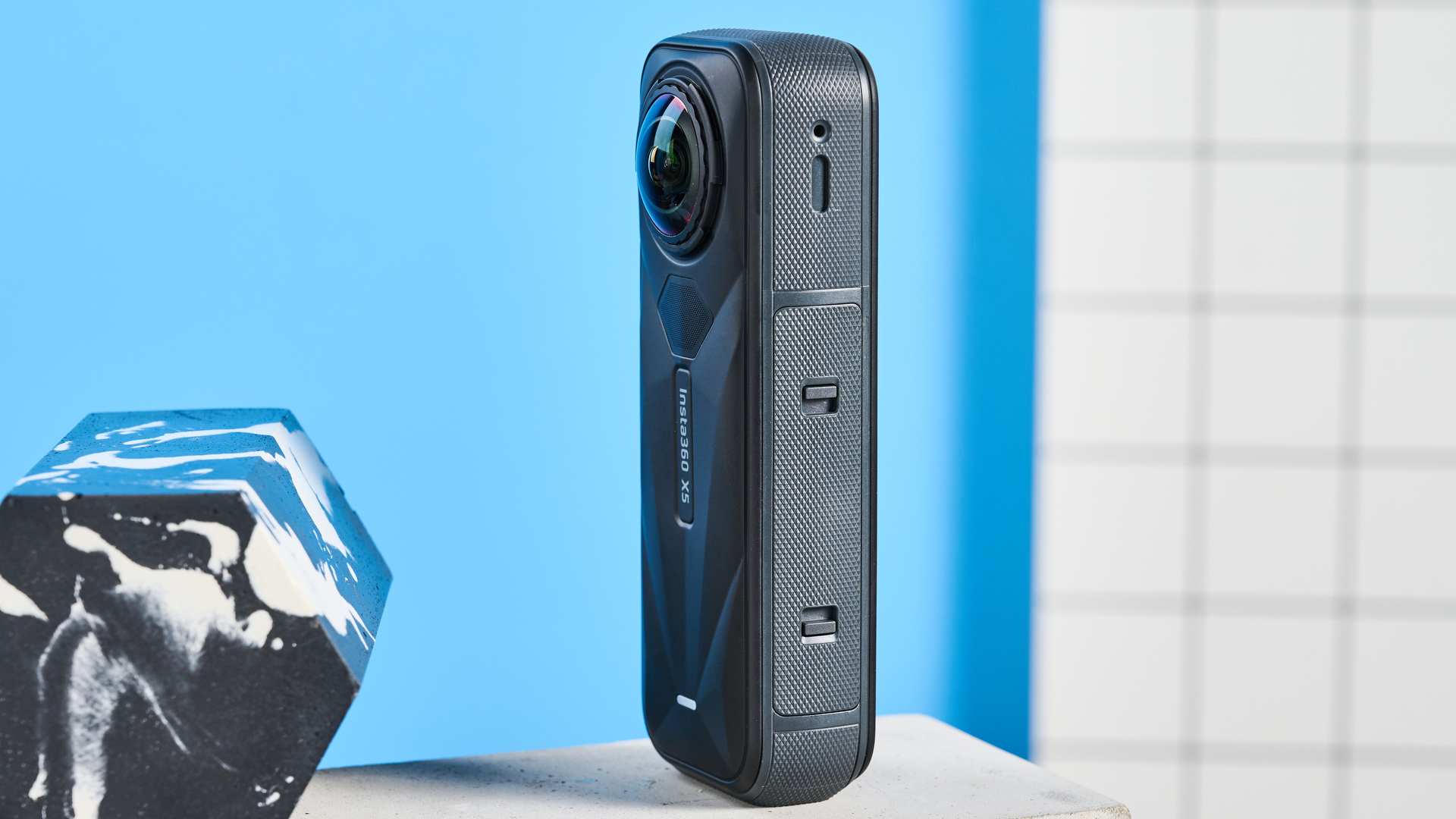
This time around, image stabilization is automatically applied and non-adjustable (so you can't select different levels or disable it). It's a good job Insta360's stabilization is some of the best in the biz, X5 included, so no worries there.
As you can see in the video clips throughout this section, footage is incredibly smooth — you really have nothing to worry about, no matter how extreme your action content.
360-degree footage
As a 360-degree camera, the main benefit of the X5 is that it gives you ultimate flexibility with camera angles. Filming in 360 degrees means you can essentially shoot first, frame later, and you don't need a B-cam to cut away to a separate angle.
As you can see in the footage above, by recording in 360-degrees, it is then possible to pan from a subject, to the road ahead, and then back to the subject whenever wanted.
Like many other 360 cameras, the X5 does this by shooting through two lenses, each onto their own sensor. Both record a 180-degree field of view (FoV), which is then stitched together by the camera to result in a 360-degree picture.
Stitching lines are often visible by missing chunks of the frame. The X5 does suffer from some noticeable stitching, but it isn't major, and is confined to the area directly below where the camera is positioned. I couldn't see any stitching lines elsewhere.
Stitching gaps below the camera often works in the user's favor, as it's what enables the X5's invisible selfie stick view, where the selfie stick is removed and the camera appears to be floating, as you can see in the footage above.
It wouldn't be an Insta360 X-cam without the crazy effects you can apply to 360 footage either. There are plenty to choose from, from the funky 'Tiny Earth' effects demonstrated above, to stomach-churning flipping and rolling, through to more sober effects such as post-production subject tracking (which works very well).

As you can see in the screenshot above, the software was able to detect and track faces frame by frame — it could even pick up faces in passing cars!
Single-lens
While it's a 360 camera, the X5 can also shoot like a traditional action camera in single lens mode at 4K, up to 60fps. You can use all of the set fields of view (FoV) available in 360 mode, but once you set your FoV, it's locked in as you record, like a traditional action cam.
Single lens footage looks fantastic in 4K/60p, as you can see in the clip above. This video was shot on a sunny day in the camera's Vivid color profile and looks fantastic. It's sharp, with bold, vibrant greens and blues, but doesn't feel unnatural.
InstaFrame
One of the issues with 360 footage is that it takes a lot of editing. You need to go through the entire footage and set keyframes to keep everything aligned on/switch to the FoV you want at any given time.
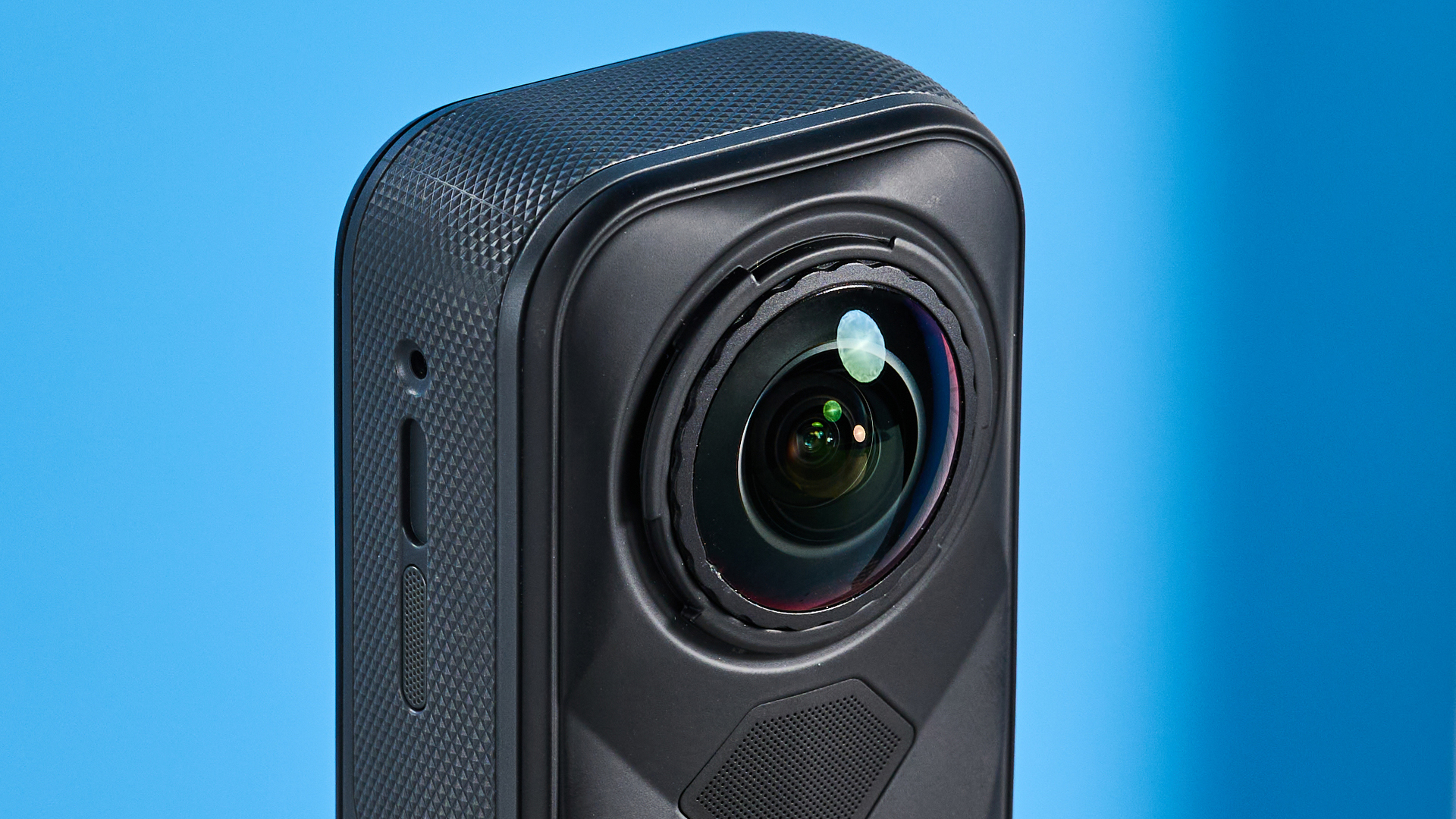
InstaFrame is a new mode that shoots single-lens and 360-degree footage simultaneously. This means you have a fixed-perspective footage that doesn't need shedloads of reframing, plus 360 footage to change angle if you want to.
After shooting some footage in this mode, I can certainly see the usefulness of having a single-lens file, with a 360 file as essentially B-roll to splice in when I wanted. If you're in a time pinch and just need a video to upload immediately with the flexibility to edit more later, it could be great.
However, when you do that editing later, you'll still have to reframe that 360 footage as usual, and then take extra time splicing and arranging into a single lens timeline. What's more, this mode maxes out at 5.7K (1080P when reframed) for the 360 footage and 1080p for the single lens footage, so you're sacrificing a lot of resolution.
Low light performance
The X5 features larger sensors than the X4, up from 1/2 inches to 1/1.28 inches. Larger sensors generally allow for cleaner images in low light, and wider dynamic range capture.
Additionally, Insta360 says it has fitted a better image processor, which should smooth out noise better than the prior model, resulting in a sharper image.
As you can see from the footage above, shot in the PureVideo low light mode, performance is pretty solid. I shot the footage at around 9pm, after the sun had set. The X5 has brightened up the sky significantly. The video is free from noise, although there is some loss of sharpness thanks to the smoothing effects of noise suppression, but this isn't major.
Insta360 X5 review: Microphone performance
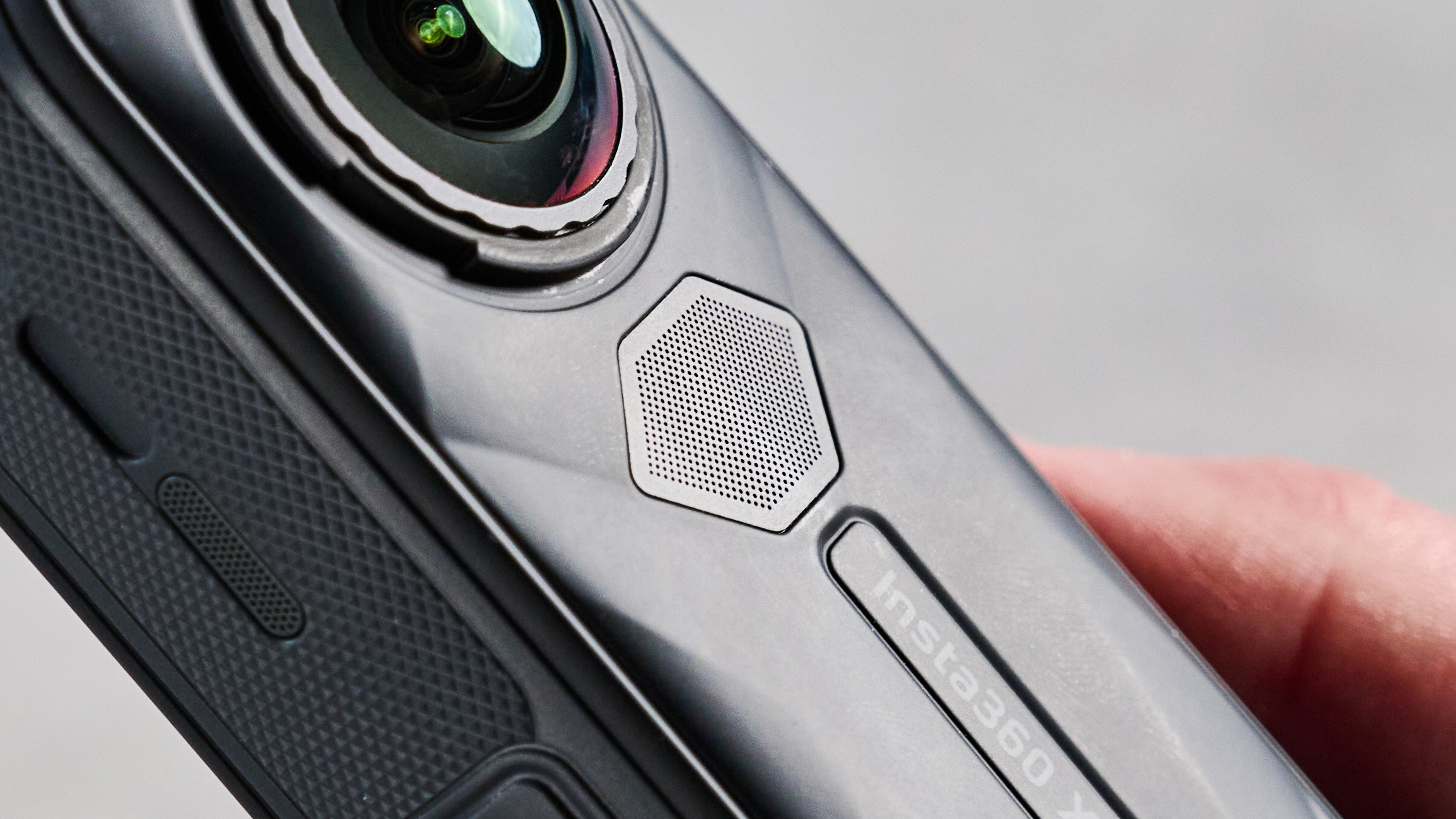
The Insta360 X5 has the best internal microphone of any action camera or 360 camera I've tested. Even better than the DJI Osmo Action 5 Pro (and that's no mean feat).
Firstly, there's a vocal enhancement mode, which cuts background noise to (you guessed it) prioritize vocals. This mode is designed for general vlogging in noisy environments.
I tested this mode with some very loud church bells being rung behind me, and it did a decent job of quieting the bells and making my voice sound more prominent. As you can see in the video above.
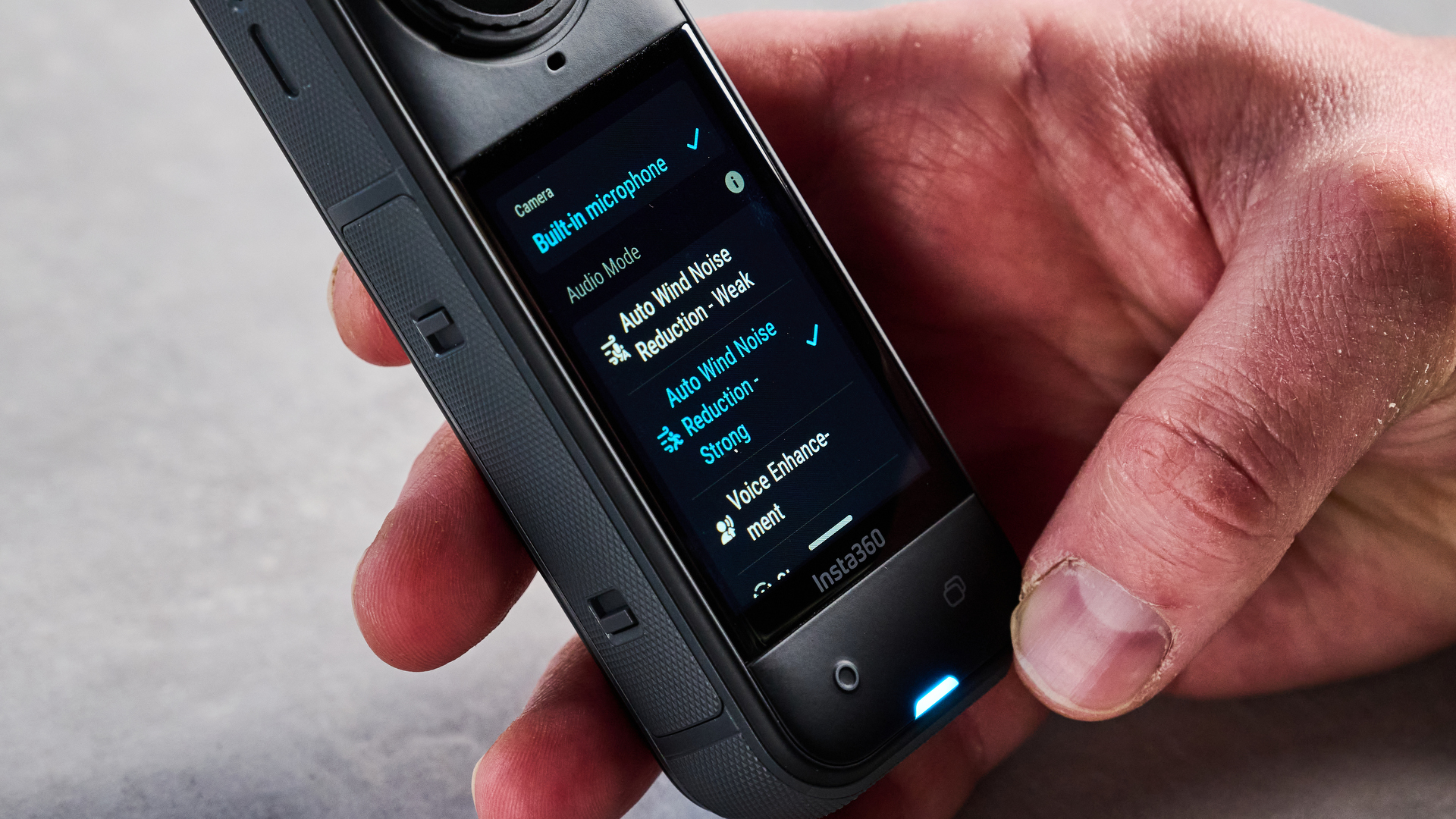
Wind reduction modes are usually little to write home about, but the X5's is extremely capable. Combined with the new built-in mesh wind-guard, motorcycling footage (the ultimate test for wind reduction) remains eerily free of buffeting. As you can hear in the clip below, using the 'Strong' wind reduction setting, the motorcycle's engine and exhaust are discernible and wind buffeting is minimized.
The 'Strong' reduction processing has resulted in a little clipping and distortion of the upper frequencies, plus some thinning out of the sound as lower frequencies are cut.
The clip below, by contrast, using the 'Weak' wind reduction setting, is a little truer to life. There's less clipping up top, more depth to the engine note, and only a little more wind buffeting — I think it's a very happy medium.
Compare both to the footage below with wind reduction disabled, which is effectively ruined by wind buffeting.
There isn't as much depth as you'd expect from a high end external microphone like the Rode Wireless Pro or DJI Mic 2, but the X5's microphone performance is more than good enough for online content. Besides, if you don't (or physically can't) place an external properly out of the wind, you'll experience ruinous wind buffeting anyway.
For motovlogging in particular, where wind buffeting is a major issue, I highly recommend the X5.
Insta360 X5 review: App & software
The best way to edit 360 footage from the X5 is via the Insta360 app or Insta360 Studio desktop software. I used the app for all the footage in this review, because I was shooting testing footage while away from home. It's super easy to use for short clips, giving you plenty of basic editing functionality (exposure, colors etc), plus the ability to keyframe edit, align and add crazy effects to 360 footage.
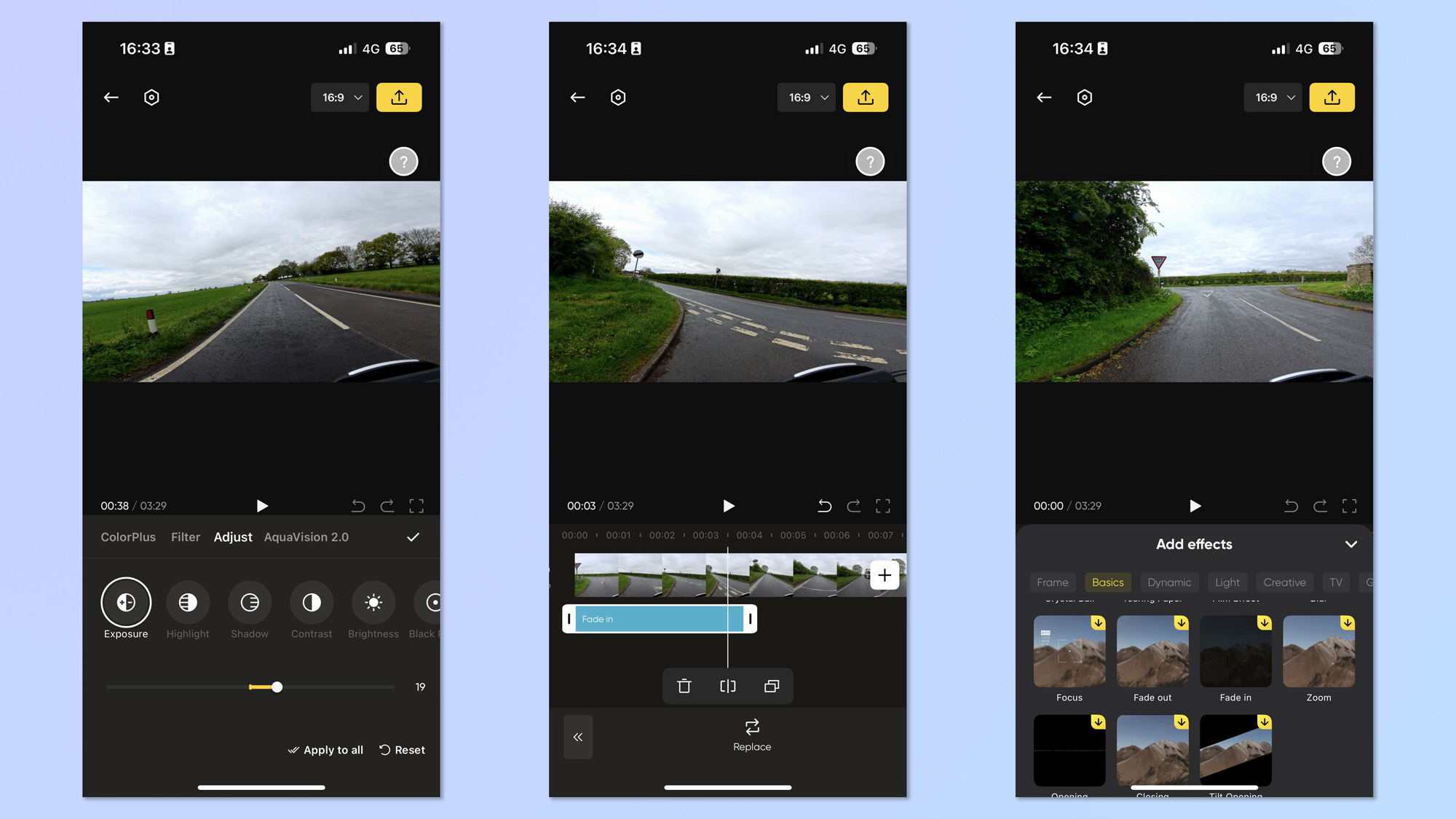
If editing longer clips, I would advise instead using the Insta360 Studio desktop app, as the interface gives you more space, and you'll find your workflow much easier.
The Insta360 app also offers a remote control mode, so you can control the camera from your phone. Naturally, it allows file transfers/exporting to your phone over Wi-Fi and direct social media uploads.
I've said it before, I'll say it again: the Insta360 app is still best in class as far as action/360 camera companion apps go.
Insta360 X5 review: Battery & overheating
The X5 features an improved battery and better heat dissipation versus the X4. Insta360 claims a 185-minute maximum battery life, up from 135 minutes in the prior model.
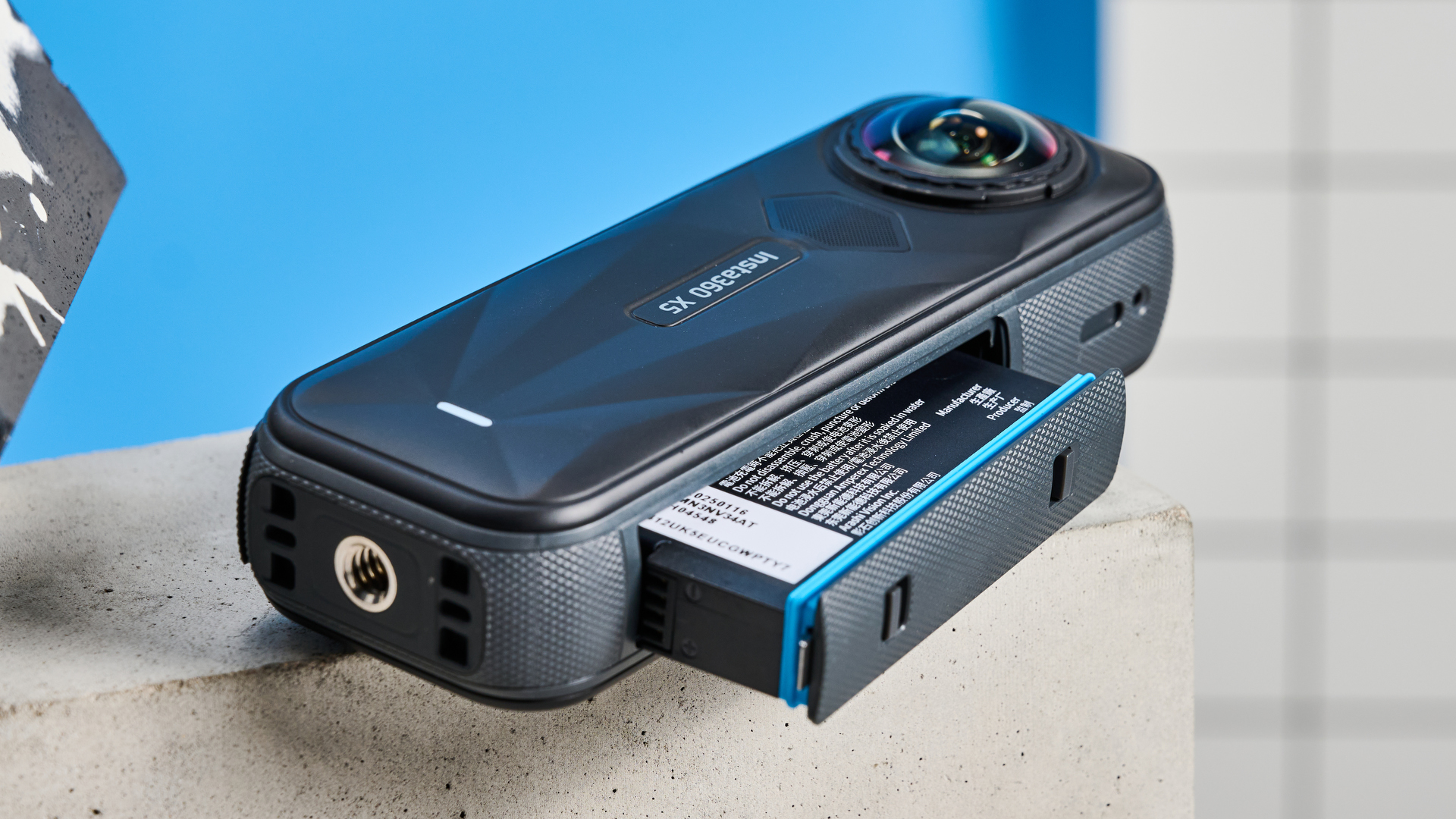
That 185-minute claim is when the X5 is put into a new 'Endurance mode' at 5.7K/24p. Endurance mode tops out at 5.7K/30p, which will result in Full HD at 30p 16:9 reframing. Not really an ideal scenario, as the main benefit of the X5 (like the X4 before it) is the ability to reframe in 2.7K thanks to that 8K maximum 360-degree resolution.
In my real world testing, I managed to get around 95 minutes of mixed footage on a single charge, and still had 7% battery left. That included:
- 52 minutes at 8K/30p (used ~70% battery)
- 20 minutes at 5.7K/30p Endurance mode (used ~10% battery)
- 16 minutes of InstaFrame footage at 5.7K/1080P/30p (used ~7% battery)
- 9 minutes of single-lens footage at 4K/60p (used ~5% battery)
Oddly, single-lens battery life appears to have gone backwards. In my standardized 4K/60p single-lens indoor stress tests, the X5 lasted for 87 minutes. The X4, by comparison, lasted for 111 minutes at 4K/60p. Neither overheated once (although expect overheating at 8K during slower-paced of standstill shooting).
Clearly, as Insta360 says, big improvements have been made to the battery during 360 use, although its disappointing to see a decrease in performance in single lens mode. I loved the fact that the X4 was able to put many of the best action cameras to shame at 4K/60p. Still, what matters most in a 360 camera is 360-degree battery life, and that has been improved.
The X5 also features rapid charging. Using a 100W charger, I obtained 50% battery from a 20-minute charge. So you can expect zero to full in under 45 minutes.
Insta360 X5 review: Verdict
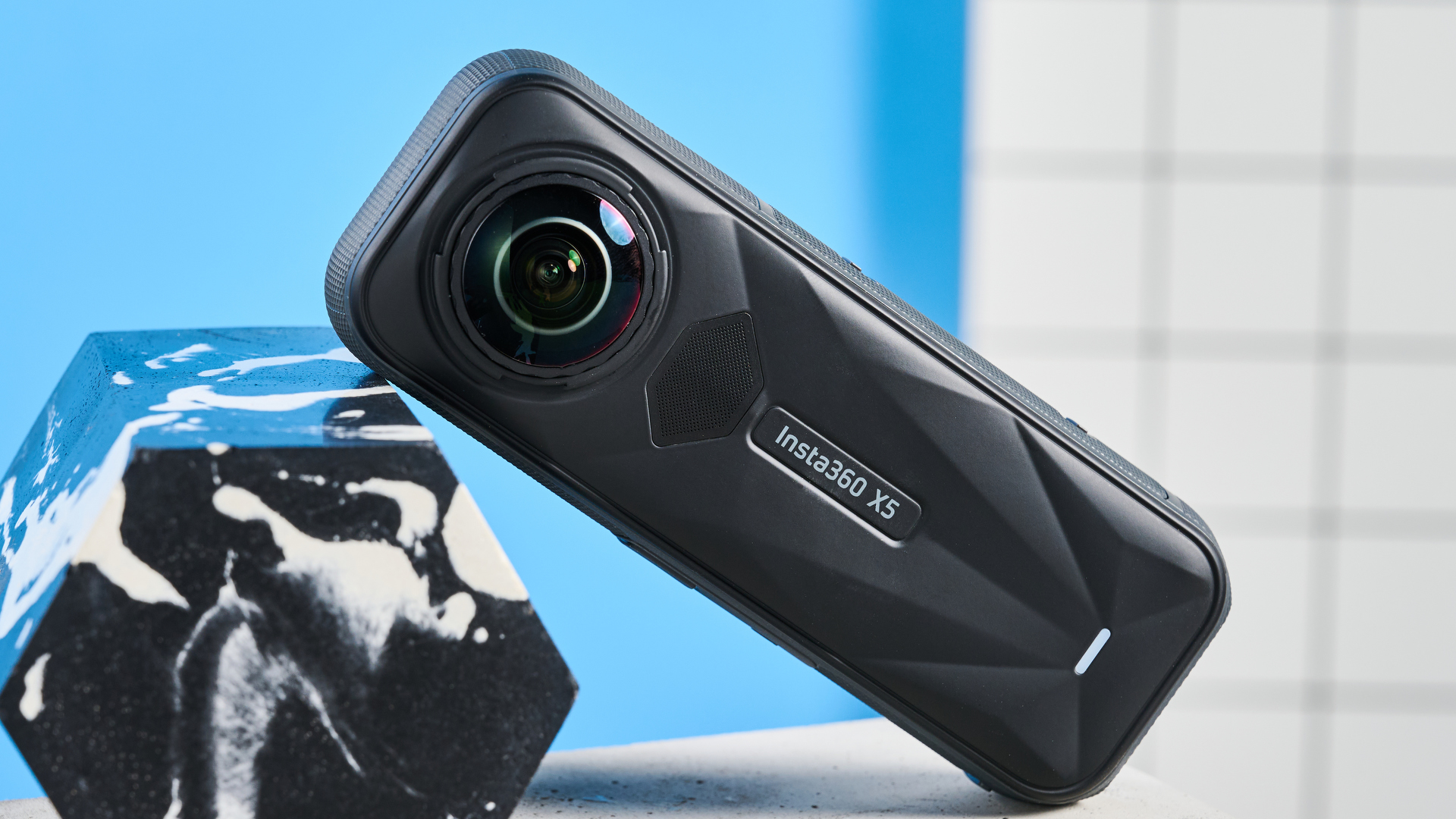
The Insta360 X5 is easily the finest 360 camera money can buy. It produces stunning video, with the best quality 360-footage, features and editing it's possible to get right now. Combined with a superb microphone array, the usual Insta360 slick interface and app, and replaceable lenses (removing the need for lens guards), and the X5 is a truly worthy successor to the X4. I'd say it's even worth the upgrade.
The only thing that Insta360 has left to achieve now for its 360 cameras is 4K 16:9 reframing, which is a serious technical feat, requiring entirely new sensors. I'm sure they'll get there before long. And until then, the Insta360 X5 is more than enough 360-camera for me.

Peter is a Senior Editor at Tom's Guide, heading up the site's Reviews team and Cameras section. As a writer, he covers topics including tech, photography, gaming, hardware, motoring and food & drink. Outside of work, he's an avid photographer, specialising in architectural and portrait photography. When he's not snapping away on his beloved Fujifilm camera, he can usually be found telling everyone about his greyhounds, riding his motorcycle, squeezing as many FPS as possible out of PC games, and perfecting his espresso shots.
You must confirm your public display name before commenting
Please logout and then login again, you will then be prompted to enter your display name.
